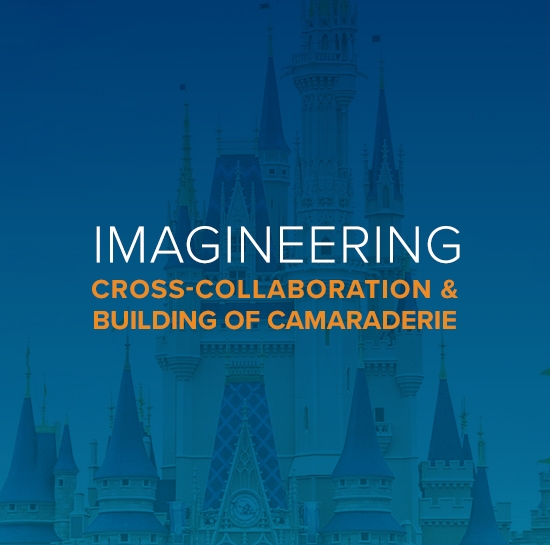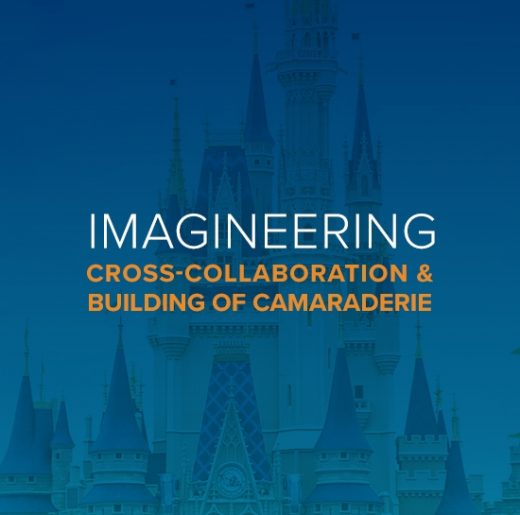Top 5 Lessons from Watching Disney’s Imagineering

Three months of Disney Plus-bliss passed by in the wave of Tinkerbell’s wand, and I’m now recovering from a substantial binge of classics and an affirming love for Marvel. In flipping around the Wonderful World of Disney, I stumbled across a gem in one of the new original series—Imagineering. It chronicles the invention of the Imagineering team—a creative collection of art designers, engineers, lighting techs, modelers, etc., who brought the theme parks to life. At the same time, it shows the unique path Walt Disney, later his brother and subsequent leaders like Michael Eisner and now Robert Iger took in the life of both the parks and the business at large.
Each episode becomes a master class in people management, leadership, creating a vision and navigating issues. In typical Disney fashion, the lessons are shared in supreme storytelling, so you don’t quite realize that you’ve been given a glimpse behind the curtain. I’ve made it two-episodes in, and the following are a few of the business lessons we can apply today:
Sometimes Who You Think Is the Best Person for the Job… Isn’t
Disney started out building Disneyland with traditional engineers but quickly discovered they lacked the ability to translate his vision. So, he then turned to art directors to bring dreams to life in the parks. In coupling mechanical engineers with the creativity of artists, Walt moved beyond the obvious team and thinking, which was the only way to create something truly unique. These days, hiring talent becomes a checklist of wants, so HR goes out looking for a unicorn. Consider looking at the need and what you hope that person will create. This might open a whole new candidate pool for your next rockstar hire.
Do Things Afraid
The building of Disneyland was the embodiment of Murphy’s law, and they seemed to start from the beginning with land issues. What started as a $ 1.5 million budget skyrocketed to $ 17 million. Torrential rains caused mudslides. As more than 1200 works toiled to get the park finished, Walt shared his deep fears to a select few, but he moved forward anyway. He had every reason to stop many times. If he had quit, he would have missed the magic, and we wouldn’t have the house the mouse built. How many projects have you backburned because they seemed daunting, insurmountable? Maybe it’s a reorg or a rebrand. Maybe that next step gets you to legendary.
Build a Business Where People Can Grow
Many of the people interviewed in the series rose through the ranks of Disney. Some started as ride attendants, ice cream scoopers, some were children of employees. They all found a place where they could grow and explore their interests, seeing the company from various angles—all the way to executives. It requires a conscious effort to create space and invest in individuals to nurture them along as part of the company journey. How are you investing in your team? Do you create learning opportunities outside of their focus areas? Consider taking a broader approach to the team member’s individual learning development and have he or she invest it back in their work, rather than work development that has to be re-engineered for the person.
Look Behind the Numbers
When Disney World opened in 1971, they projected half a million people would attend on the first day, but only 10,000 showed up. If they had only looked at the attendance records and not dug any further, they would have called the park a flop. Once they took a moment to dig further, it turned out that people were afraid of a packed house and delayed their visit. So, when the numbers look disastrous, take the time to look for the why behind the digits. As a digital marketing firm, numbers are a North Star, but we have to take the time to remember that they are associated with human behavior. The two can’t be separated.
When a Team Connects with Leadership’s Vision, Magic Happens
As I watched, there were cast members repeatedly saying how they did the impossible for Walt. His vision was contagious and his faith in his team to make it come to life was hard to resist. When he passed, his brother Roy led that charge and castmates followed, creating the Happiest Place on Earth. Now, this is an extreme example, but consider how much more productive we would be if more time was taken for the team to just be on the same page—let alone committed to seeing it through? How do you connect your team with your vision for your organization or even a project? Are you open to feedback and their perspective which helps in buy-in?
One last note: Disney, the man and the corporation, valued connections. He made it a point to spend time with his Imagineers, the workers building the park, the writers, anyone with a hand in his vision. The environment fostered cross-collaboration and building of camaraderie so everyone had someone to turn to for help or fun. In a world where many things are accessible with a swipe of a keystroke, it was nice to be reminded of what we can do together when we connect and collaborate.
As exemplified by Walt Disney, a fabulous end product begins with a plan and an eager team. When looking to bring your vision to life, it’s perfectly OK to ask for a little help.
Business & Finance Articles on Business 2 Community
(8)


